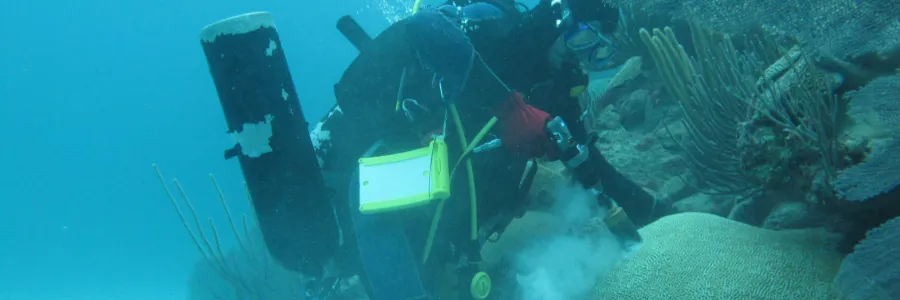Research themes
Our 5 specific research themes are:
- Past to future climate change
- Environmental geochemistry and radioactivity
- Volcanic and magmatic processes
- Critical elements and metal deposits
- Carbon dioxide removal and storage

Our 5 specific research themes are:
Since the industrial revolution the concentration of atmospheric CO2 and other greenhouse gasses have increased. This has already caused demonstrable climate change. We gain insights into how the climate will change in the future by looking into past time periods.
We use analytical techniques to measure the chemical and isotopic composition of ancient organisms such as microbes, foraminifera and corals. We then reconstruct::
We need to understand the sources, pathways and fluxes of contaminants, and find improved ways to measure, monitor and manage contaminants. We can then mitigate their environmental and human health impacts.
Our geochemistry and radiochemistry facilities allow us to:
We investigate the processes occurring during magma production and crustal development to learn how they shape the physical, chemical and biological evolution of our planet.
We use chemical tracers and isotopic measurements of all types of volcanic materials to:
The global ambition to build a greener, sustainable economy requires an increased supply of critical elements. These elements include cobalt and lithium for use in batteries and rare earth elements (REE) for production of light weight powerful magnets. Future projections suggest current sources of these elements may not be sufficient to meet increased demand. Some available sources are in geopolitically sensitive areas.
We have a fieldwork and sampling programme in areas with proven and potential reserves of critical elements. These include Namibia, Serbia, Turkey, Zambia and Argentina.
Using samples of whole rock and minerals we:
It is clear that reducing emissions of CO2 won’t be enough to achieve the Paris Agreement goal to limit the increase in global average temperature to 1.5 °C. We need to remove and store approximately 800 Gt of residual atmospheric CO2 emissions by the end of the century. We research carbon capture and storage in geological reservoirs and greenhouse gas removal from the atmosphere.
We are: